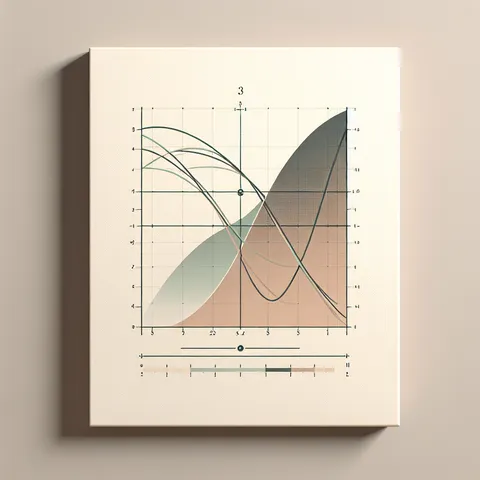
Writing and interpreting exponential functions
Quiz
•
Mathematics
•
9th - 12th Grade
•
Hard
Standards-aligned

Wayground Content
FREE Resource
Enhance your content in a minute
20 questions
Show all answers
1.
MULTIPLE CHOICE QUESTION
15 mins • 1 pt
Time
Decay or Growth Factor
Starting Amount ( Y - int)
Bomsta
Tags
CCSS.HSF.LE.B.5
2.
MULTIPLE CHOICE QUESTION
30 sec • 1 pt
A car's value is modeled by the equation
, where t is years. Which statement correctly interprets the equation?The price of the car was originally $8,000
the price of the car is originally $23,000 and increases by 80% over time
the price of the car is originally $23,000 and decreases by 80% over time
the price of the car is originally $23,000 and decreases by 20% over time
Tags
CCSS.HSF.LE.B.5
3.
MULTIPLE CHOICE QUESTION
30 sec • 7 pts
The population of bacteria in a Petri dish is 550 and increases according to the expression
, where t is the number of hours.
What effect would increasing the initial population of the bacteria have on the rate at which the number of bacteria increases?
An increase in the initial population will lower the rate at which the population increases.
An increase in the initial population does not affect the rate at which the population increases.
An increase in the initial population will increase the rate at which the population increases.
An increase in the initial population increases the time the bacteria are increasing.
Tags
CCSS.HSF.LE.B.5
4.
FILL IN THE BLANK QUESTION
30 sec • 1 pt
P = 8(1.23)t
What is the initial quantity?
Tags
CCSS.HSF.LE.B.5
5.
MULTIPLE CHOICE QUESTION
30 sec • 1 pt
What is the inital amount?
1.23
.23
.77
3,000
Tags
CCSS.HSF.LE.B.5
6.
MULTIPLE CHOICE QUESTION
5 mins • 1 pt
What is the initial amount, for the function:
f(x) = 300(1.16)x
300
1.16
0.16
3
16%
Tags
CCSS.HSF.LE.B.5
7.
MULTIPLE CHOICE QUESTION
1 min • 1 pt
What does the a in y=a(1+r)x represent?
Time
Rate
Slope
Initial Amount
Tags
CCSS.HSF.LE.B.5
Create a free account and access millions of resources
Create resources
Host any resource
Get auto-graded reports

Continue with Google

Continue with Email

Continue with Classlink

Continue with Clever
or continue with

Microsoft
%20(1).png)
Apple
Others
Already have an account?
Similar Resources on Wayground

20 questions
Solving systems of equations by substitution_1
Quiz
•
9th Grade

20 questions
POTENCIACIÓN DE NÚMEROS ENTEROS
Quiz
•
8th - 9th Grade

20 questions
Math 10C Labelling Right Triangles
Quiz
•
8th - 11th Grade

20 questions
ÔN TẬP GIỮA KỲ II - TOÁN 6
Quiz
•
9th - 12th Grade

15 questions
Conocimientos Previos
Quiz
•
5th - 10th Grade

18 questions
Funciones Trigonometricas
Quiz
•
12th Grade

15 questions
Supplementary angles
Quiz
•
7th - 11th Grade

20 questions
Réduction d'expressions littérales
Quiz
•
7th Grade - University
Popular Resources on Wayground

25 questions
Multiplication Facts
Quiz
•
5th Grade

15 questions
4:3 Model Multiplication of Decimals by Whole Numbers
Quiz
•
5th Grade

10 questions
The Best Christmas Pageant Ever Chapters 1 & 2
Quiz
•
4th Grade

12 questions
Unit 4 Review Day
Quiz
•
3rd Grade

20 questions
Christmas Trivia
Quiz
•
6th - 8th Grade

18 questions
Kids Christmas Trivia
Quiz
•
KG - 5th Grade

14 questions
Christmas Trivia
Quiz
•
5th Grade

15 questions
Solving Equations with Variables on Both Sides Review
Quiz
•
8th Grade
Discover more resources for Mathematics

5 questions
Triangle Congruence Theorems
Interactive video
•
9th - 12th Grade

20 questions
Triangle Congruence Theorems
Quiz
•
9th Grade

20 questions
Solving One-Step Equations
Quiz
•
6th - 9th Grade

15 questions
Graphing Systems of Equations
Quiz
•
8th - 9th Grade

20 questions
Function or Not a Function
Quiz
•
8th - 9th Grade

14 questions
Model and Solve Linear Equations
Quiz
•
9th - 12th Grade

10 questions
Test Your Christmas Trivia Skills
Interactive video
•
6th - 10th Grade

17 questions
Identify Linear and Nonlinear Functions
Quiz
•
8th - 12th Grade






